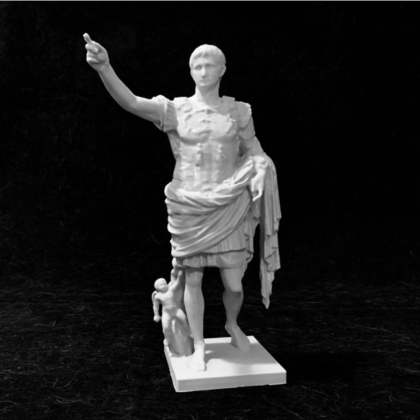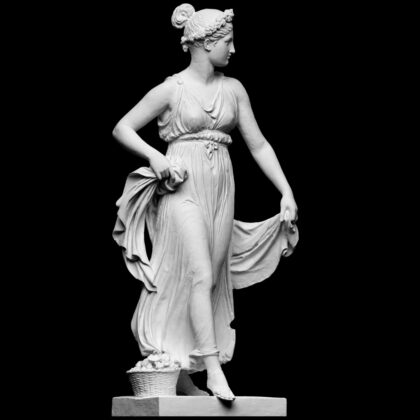This copy was acquired in 1926, created from an original dating to 430 BC excavated from a temple front. The original marble was brought to Rome in antiquity before being found in a garden in 1906. The garden had belonged to the historian Sallust (c. 86 – 35 BC) and Roman Imperial families. Sallust served under Gaius Julius Caesar and advocated the virtues of the Roman Republic. His taste for erotic and morbid sculptures like this one was of particular interest to him. Two other original characters of the same origin can be found in the Ny Carlsberg Glyptotek.
A young woman slumps to the rocky ground, arching her back as she attempts to extract the arrow that has pierced between her shoulders. The sculpture was completed with the arrow and bronze earrings. The maiden, with her still immature figure, can be identified as a Niobid portrayed immediately after her fatal injury recounted in the mythical story of the killing of the Niobids. Proud of her children, Niobe incurred the wrath of Leto, who told her children Apollo and Artemis to use their arrows to slay the seven sons and seven daughters of her rival.
The dying Niobid, one of Niobe’s daughters, must have been part of a group that included her mother, sisters and brothers attacked by Apollo and Artemis with their arrows. As well as the Niobid of Palazzo Massimo, two other examples from this sculptural group still exist today: a Running Niobid and a Lying Niobid (Copenhagen, Ny Carlsberg Glyptotek), which were similarly discovered in the area of the Horti Sallustiani.
The three sculptures, datable to around 440-430 BC, decorated the pediment of a Greek temple intended to be identified with the Temple of Apollo Daphnephoros at Eretria. Part of the temple’s sculptural decoration was moved to Rome, probably during the Augustan period, and was reused in the Horti Sallustiani to adorn a building or make part of the natural scenery in the gardens.





